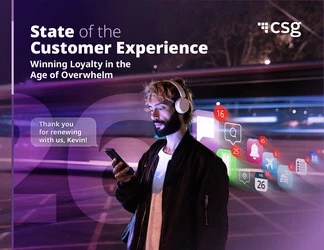Orchestration is your control center for digital CX: 5 steps for success
Cisco’s Andrew Carothers explains how to orchestrate CX at scale
Add bookmark
Customer experience (CX) is the impression you leave customers based on the entirety of their experience with your company. It is not simply about engaging them with digital and human-based touchpoints – it is about how well you unify the experience across your products and channels and choreograph those activities to create a simple, connected digital customer experience that drives value for customers.
Amazon, Apple and Starbucks are synonymous with CX. These companies have mastered the art and science of understanding what customers want, and they put as much effort into the experiences they build as they put into the products they sell. What is going on behind the scenes is experience orchestration: where CX logic, automation and machine learning (ML) are applied using everything known about a customer to deliver the next best experience.
While orchestrating digital CX is no simple feat, it must be done, and it must be done at scale. It is a lofty yet achievable goal – particularly for companies with existing data architecture and marketing automation investments. For a glimpse at how global enterprises provide every customer with personalized, guided experiences, here is a five-step starter guide for building an intelligent orchestration engine to accelerate and scale digital CX.
Step 1: Connect all data and automation capabilities, company-wide
Breaking down departmental silos and connecting customer data to create a singular set of customer profiles at the account- and contact-levels is a critical first step. Additionally, you will need to share marketing and notification automation capabilities cross-functionally to eliminate redundancy and points of friction across all phases of the customer lifecycles. With 360-degree visibility into customers’ digital actions and the ability to respond to their needs at any given moment, you can better personalize their experience and accelerate time to value.
Step 2: Define business rules to automate decisions
With a common customer data set in place, the next step is to develop an automated decision engine, which will orchestrate CX motions across digital channels, lifecycle journeys and context-rich notifications. This requires defining business rules to drive automation based on where customers are in their adoption lifecycle and their unique needs and preferences. This is critical to being able to deliver the right content to the right contact at the right time – be it for onboarding, adoption, renewal or growth.
Step 3: Use machine learning
When an automated decision engine for CX is informed by data science, it gets smarter and more predictive over time. This translates into continual improvements across data science models (and outcomes) and the methods you use for implementing them into different channels and experiences. ML can also be applied to analyze historical customer data and generate predictive models that anticipate customer needs, preferences, and behaviors. With these insights, companies can proactively mitigate risk, anticipate demand and offer more personalized recommendations and offers.
Step 4: Consider cross-channel workflows
After you have brought together data, content and notification capabilities for CX, connect across your customer-facing channels to create greater consistency, continuity and breadth of impact. For example, Cisco data and industry research tells us that email remains customers’ most preferred notification method, yet they also engage through our website, customer communities, SMS, social media and via our support team. Considering cross-channel integrations and accommodating customers’ existing workflows and preferences helps ensure we deliver the best possible customer experience for each customer.
Step 5: Measure and optimize CX using analytics
It is essential to know the various types of analytics that are being captured and understand what they are telling you about the impact CX is having across the business. To achieve this, look at metrics like Customer Satisfaction Score (CSAT), Net Promoter Score (NPS) and Customer Lifetime Value (CLV), which measure customer feedback and behaviors. Next, correlate these findings with existing metrics to understand how CX is impacting different aspects of the business, such as go-to-market strategies, digital renewals, and customer growth and success.
Remember that source data changes will have a ripple effect on automation and how data is used to drive an experience – so it requires processes in place to continuously test every step of the customer journey and guarantee automation is always working correctly.
Great CX relies on business rules to automate decision-making and trigger CX activities that offer customers (and partners) the simplest and quickest route to value and anticipates their needs. It can distinguish a company from the competition, boost customer loyalty and retention, and have a multiplier effect on growing revenue and scaling customer success.
An intelligent orchestration engine is like the control center for CX – you simply cannot have one without the other.




























